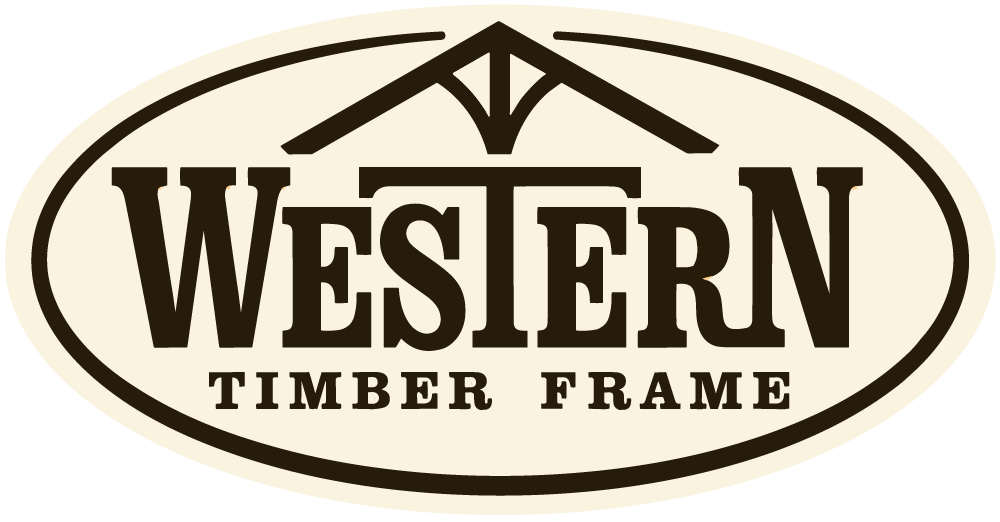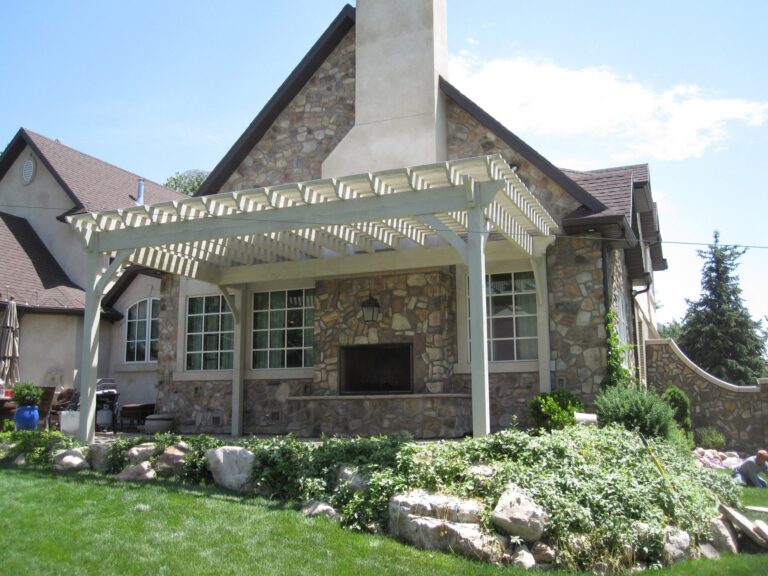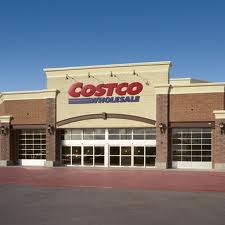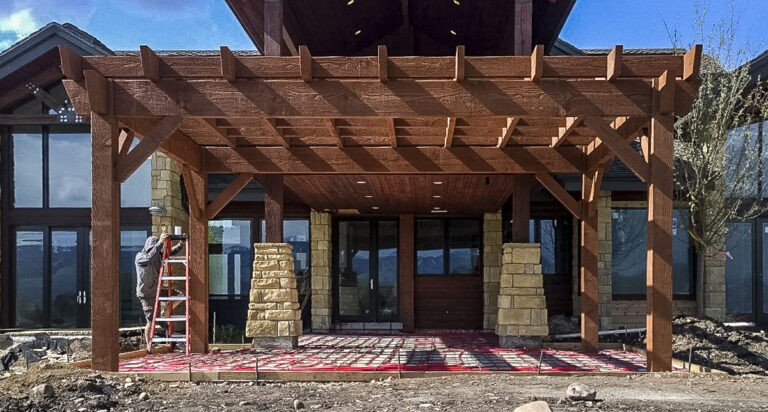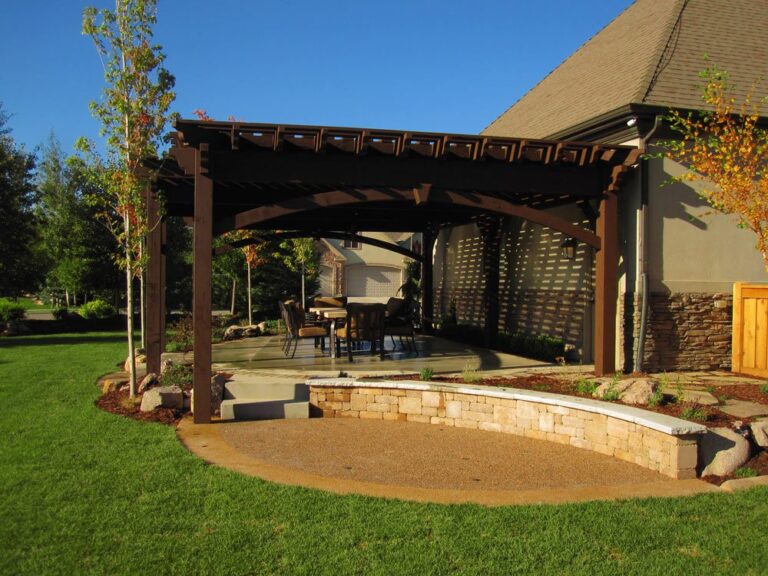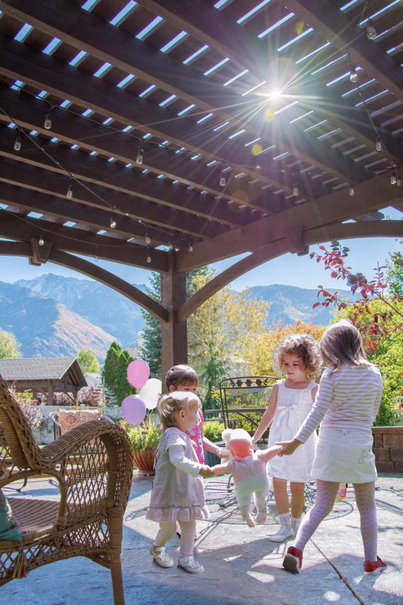Debunking Myths: Dry Rot, Wet Rot & Wood Destroying Organisms

In Awe of Mother Nature
Mass timber is gathering a great deal of attention in the art, work, and business of fabricating and assembling materials into architectural edifices. Although it is recognized as an ancient building material, timber offers unique advantages and exciting new opportunities in modern architectonic applications. Advocates for timber believe it can revolutionize the building industry, and play a supporting role in the solution to climate change.

Timber from the Old English initially meant “house” or “building material” and was large, squared cuts from trees. Trees have been used as a building material for all of human history and are one of our greatest natural resources. Nature shows us the wisdom in the use of real wood as one of her most steadfast, reliable materials when we observe the marvelous wonder of trees.
Trees supply us with oxygen, give us shade, windbreaks, and are a resource of food and medicine, to name a few of its essential benefits. Without trees, life on earth would not be possible. But there are myths and misconceptions surrounding trees and building with timber.
Dry Rot, Wet Rot, and Wood Destroying Organisms

Submerged or dry, timber can last indefinitely. Pure wood itself is not easy to destroy by the ordinary or typical operations of nature. It takes several atmospheric conditions working with each other to bring about decay.
The greatest possibility of harm to trees is not moisture in and of itself. Trees flooded and submerged underwater for well over one hundred years ago have been raised from underwater as good as new.
Timber is the archetype of immortality.
The water in lakes and rivers are in most cases too cold with insufficient oxygen to cause it to degrade. The logs retrieved from lakes are processed through conventional mills and are air or kiln-dried. Although the drowned logs have faded in some cases testing shows they contain the virtual properties and quality of the best certified modern timber.

Debunking Misconceptions
Timber has centuries-old misconceptions long ago debunked that are still being presented as “facts”. They seem to continue like apologues such as:
birds will abandon their babies if you touch them leaving your scent; even though it has been proven that birds do not smell and will not abandon a baby bird so readily;
or old wavy windows are wavy because the glass is liquid and flows down over the course of time when in fact glass is a solid amorphous; old glass didn’t become wavy over time, it was like that when it was new.
With timber, it takes exacting and extreme long-term atmospheric conditions to bring about decay or invite wood-destroying organisms.
One of the misconceptions concerning timber began in 1815 with Ralph Dodd when he published a book he titled Practical Observations on Dry Rot in Timber in order to advertise and peddle a product he concocted called Dry Rot Preventative.
Dodds took great pains emphasizing how extremely difficult it was to get rid of dry rot and made exaggerated statements to the effect that dry rot was almost impossible to stop and that you might as well “spread flames on a wall of pitch than to stop it once this destructive Dry Rot takes place”.
For dry rot to occur, there have to be the right atmospheric conditions which are moisture. So, there is no such thing as literal “dry rot.”
It was common practice in that day to cover floor timbers of dark, dank ships with oiled floor cloth, creating an atmosphere more conducive to dry rot spores. In this one example, Dodd’s inticing hysteria to promote his sales did have partial merit. Unfortunately, the hysteria of this kind and misinformation has continued to stay with us.
Dry rot is wood caused by a specific species of fungi that requires “water traps” or moist conditions. Maintaining adequate ventilation and responsible building practices with today’s building codes, Dodd’s supposition about dry rot is not relevant.
Wood Destroying Organisms

There has been much confusion as to this destructive fungus referred to as dry rot.
Dry rot is Serpula lacrymans, a fungus that germinates from a spore just as fruit or vegetation grows from a seed. The spore has to be present and posit with moisture content-saturated to the point of about 28 to 30% and the humidity to be above 95 to 98% for dry rot to begin to germinate. Even in situations where walls have had high moisture content and humidity, if the wall starts to dry, dry rot cannot tolerate these dry conditions and will become dormant and eventually die.
The conditions for dry rot is most likely in places where there is damp plaster, damp masonry, damp mortar and enclosed damp walls, cellars that are dark, stagnant and not ventilated. In some cases, masonry will never dry.
The Northern States seldom experience dry rot. Utilizing heating and air conditioning in modern buildings in the Southern States eliminating moisture problems has rendered it very difficult for dry rot to occur.
Well-seasoned timber does best when it can breathe eliminating interstitial condensation through ventilation. Dry rot cannot exist in kiln-dried lumber or thoroughly seasoned timber when the excess of moisture has been eliminated.
Wet Rot
Wet rot refers to several different kinds of fungi spread by asexual spores but the treatment is the same in all cases. As with dry rot, the asexual spores must be present and wet rot cannot take place if the timber has been thoroughly seasoned and the excess of moisture eliminated.
Kiln-dried timber will not rot because there is not enough moisture. The moisture content has to be a minimum of at least 23 to 25% for most species to begin to germinate.

Wet rot is more likely to occur in unseasoned wood or wood covered with paint or plaster not allowing the moisture to escape. Wet rot can only happen by actual contact and if it is cut out the timber kept dry will not be affected any further.
Wood Destroying Organisms

The main component of wood is cellulose, the natural sugar in fresh wood. Its primary purpose is to energize and give nutrition to the growing tree.
Decaying wood is a natural environment for wood-destroying organisms that rely upon cellulose and long-standing moisture content with oxygen to survive. Take away any of these organisms and they will not be able to survive.
Most wood-boring insects must lay their eggs in the summer. All wood destroying organisms have to have the right amount of high moisture content but not too much moisture as extreme moisture will also kill the fungi they need to survive on.
Freezing temperatures kill most species of fungi and wood-boring insects. If any of these organisms are in excess, too minimal or removed they cannot survive.
Nature, Phenomenally Marvelous!
For decomposition, fermentation or rot to occur timber has to have the right combinations of carbonic acid, hydrogen, and moisture over a long time.

Not that we would consider it marvelous from our perspective but considering all the necessary environmental conditions for wood-destroying organisms to survive it is a phenomenal, amazing, wonder of nature that they are ever able to progenerate.
On the other hand, nature astounds us that when timber is pressure treated or well seasoned rendering its sap inactive or removing it, it will not rot but contains the inherent properties to last indefinitely! Now, that is phenomenally marvelous!
The Marvel of Trees
Trees are the longest living organisms on earth. In the Sequoia National Park in the Sierra Nevada mountains of California, there stands an ancient tree, so large that as you look up at this towering monarch of majesty is more than fifty-four thousand cubic feet of awe-inspiring wood. The total sum of this king of trees can not be seen in its entirety without lifting the eyes up, up, up in a sweeping panoramic view. The tree is fondly called The President.

Photographing The President
The President tree is so large it cannot be viewed all at once. Photographers for the National Geographic used pulleys and levers, hoisting a camera into the air and snapped 126 photographs. In the December 2012 issue, they published one breathtaking composite, capturing this majestic monolith, in its full glory.
The Society Grant concluded that there is no tree with more wood in volume than The President. Its’ trunk is increasing with age, growing wider as it thickens producing more wood in a year than a healthy, strong young tree. The President is considered to be one of the oldest sequoia trees in the world – over 3200 years old – with almost two billion leaves and still growing larger and increasing in wood and still breathing in carbon dioxide and releasing its life-giving properties of pure oxygen back into our atmosphere.

• Once a tree has grown, outlasting anything that could have taken it when it was young it becomes so strong it can not be knocked over by fierce winds and it appears to be indestructible.
• Its’ bark is so thick it is resistant to fire and the giant sequoia is protected from fires caused by lightning. The lightning can harm the adult tree but it seldom kills them.
• Ground fires enhance and help the sequoias by opening up the sequoia cones for the seeds to sprout in the nourishing ashes and sunshine. It opens up cones and lets saplings have light and flourish.
• The bark and center wood are impregnated and ingrained with natural chemical fungicides that preserve it against fungal canker and decay. Termites, wood ants, and wood-boring beetles do not faze or effect them.

Timber Still Breathing Life

There is more to timber than its majestic beauty and harmonious warmth that smiles upon us when observing this natural product with our eyes. We breathe in oxygen and when we exhale we release carbon dioxide (CO2).
Trees are experts at creating balance thriving diligently on carbon dioxides from the atmosphere through the process of photosynthesis and releasing it out again as pure, fresh oxygen. Without this balance a tree would eventually suffocate and die and so would we.
Over 50% of a tree’s dry wood weight is carbon. Seasoned wood actively continues to store carbon dioxides even hundred of years after it has been felled.
Trees can clean up sewage and animal waste, water runoff and roadside spills.
Amazingly, besides turning CO2 into oxygen again they also filter harmful substances and dangerous chemicals that have entered and been absorbed into the soil. Trees also store the pollutants, changing the harmful pollutants and reduce them into a less harmful form.
By expelling moisture into the air, trees help in the process of creating rain.

We can thank trees for giving us cleaner soil, cleaner water, and cleaner air.
Tree of 40 Fruits
Sam Van Aken grew up on a farm and later became an art professor at the University of Syracuse in New York. When Van Aken learned that an heirloom orchard station was closing for a lack of funding, he bought the orchard to prevent over 250 varieties of trees from going extinct.

Combining his artistic talent and agriculture knowledge he grafted 40 varieties of trees into one root structure. In the spring, the tree is a gorgeous array of pinks, red, purple and white blossoms. In the summer, it produces rare varieties of almonds, apricots, cherries, nectarines, peaches, and plums.
Incredulously, trees do not stop giving us life after they have been harvested.
Unlike concrete or steel; which only emits the carbon dioxide into the atmosphere, mass timber continues to absorb and store carbon dioxide.
A ten-story wood building at 2590 square feet per story stores 1570 tons of carbon dioxide whereas a comparable concrete building will emit 2175 tons of carbons.

Timber regulates itself for more even temperatures but it also has another remarkable characteristic, bacteria will not reproduce itself on wood.
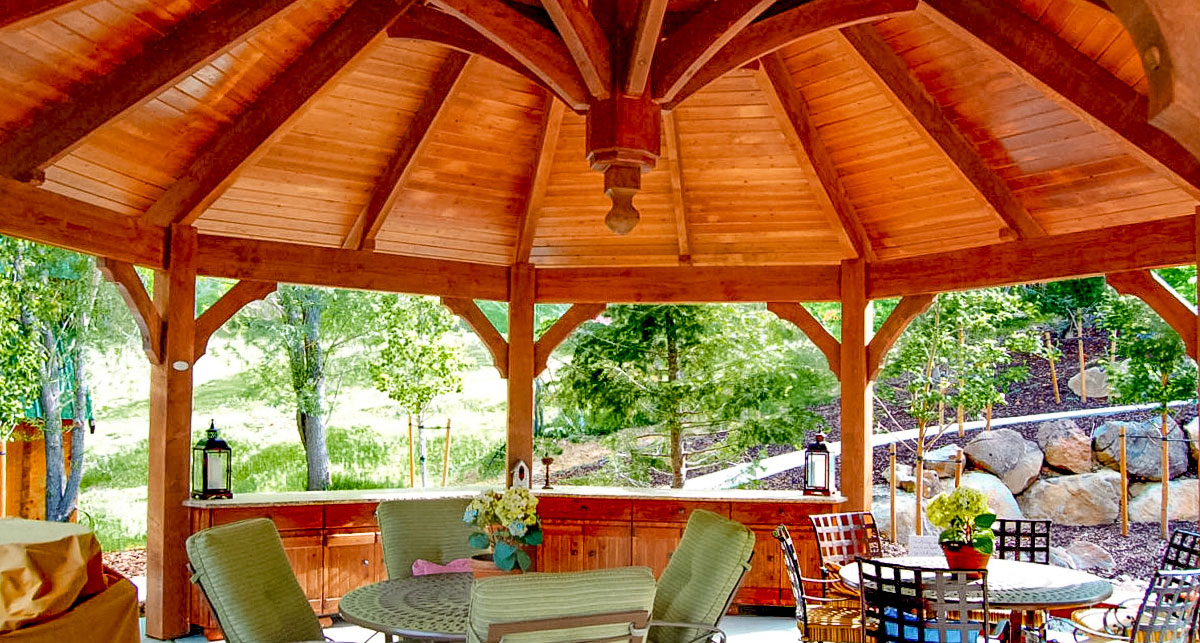
#DIYGazeboKit #MassTimberGazebo #TimberFrameGazebo
Timber is amazing when you consider buildings that are centuries old are still strengthening us, giving us a healthier, safer, cleaner and more comfortable surroundings. An enclosed room made from timber not only makes us a healthier but regenerates us by stimulating our senses with is warmth, smell, texture, and variations of colors.

On this wonderful earth, genuine wood products are still of the finest, most dependable materials known to man with its long-lasting benefits and positive influences upon our environment over man-made synthetic alternatives.
Nothing is wasted in the industry of timber products even the residue of sawdust and bark are made into mulch to replenish and given back to the earth. Trees are a wonderful part of our civilization.

#DIYPavilionKit #HotTubCover #MassTimberPavilion
Timber, like steel, can carry a great amount of concentrated weight load. The Radiata pine native to California is one extreme example of the strength of wood. Its ratio weight strength is 20% higher than steel and 5 times stronger than non reinforced concrete under compression.
Wood is anisotropic, i.e. possessing different strengths in different directions. There are several species of woods possessing immense load strengths but one of the very best is the Douglass Fir.
The Douglass Fir has an even higher strength ratio than the Radiata pine and is considered to be the most perduring for timber support beams.
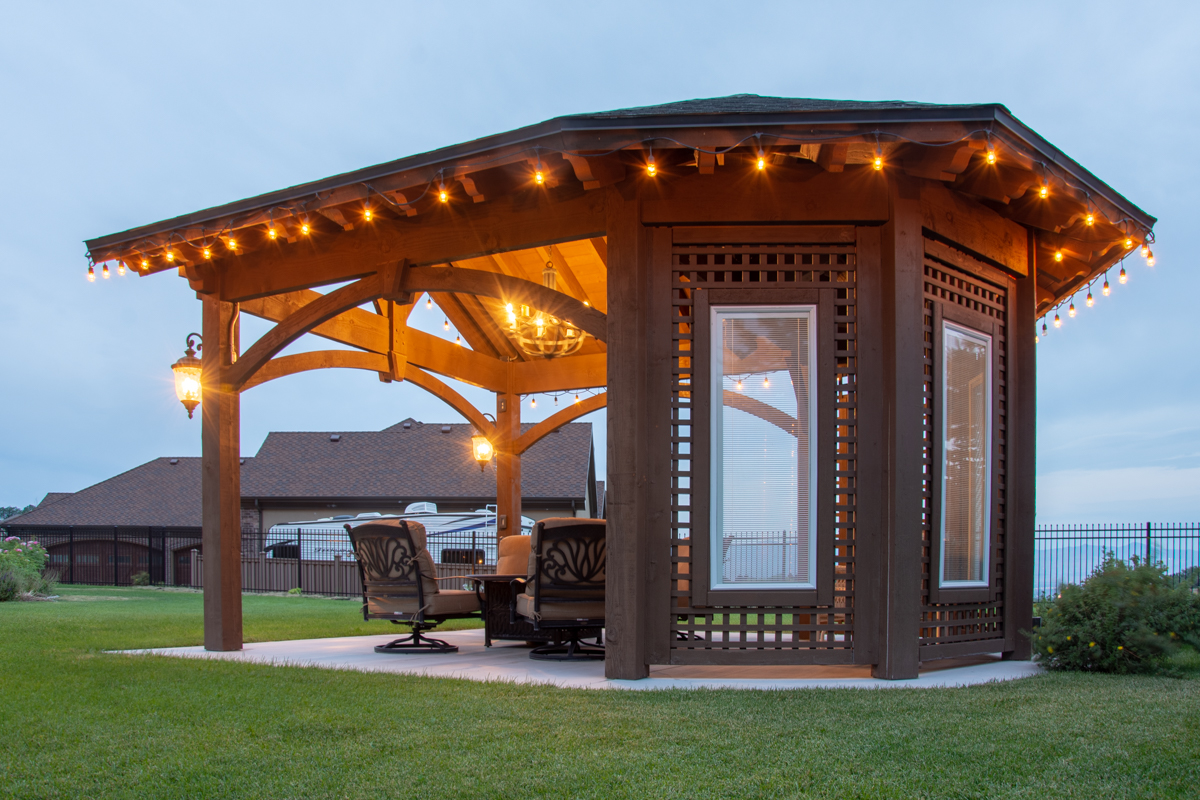
#MassTimberShelter #DIYGazeboKit #OutdoorLiving

Wood costs less and expends less energy to manufacture from raw material than alternative building materials. Unlike mining for ore, trees are harvested crops and are not depleted.
Only a small fraction of the forests are utilized and when managed properly they are an inexhaustible and an abundant sustainable resource. Wood is also durable and ecologically sound being 100% biodegradable with renewable energy and is reusable as well.
Testing Timber with Explosives!
There are many advantages of building with timber. Wood invokes warm feelings and is a beautiful, renewable, sustainable construction material. It also reduces the carbon footprint of buildings.
The use of wood technology is almost endless, with new applications being invented and assessed as in this explosion test of three cross-laminated timber structures by Woodworks.
Woodworks worked with the United States Forest Service at Tyndall Air Force Base predicting acceptable levels of damage under large-scale explosive loads. Their prognosis matched their model builds and all the structures remained in tact after significant explosions. That’s impressive! You can watch their video footage here.
#TimberExplosion #TestingTimber #MassTimber #TimberStructures #OutdoorLiving
